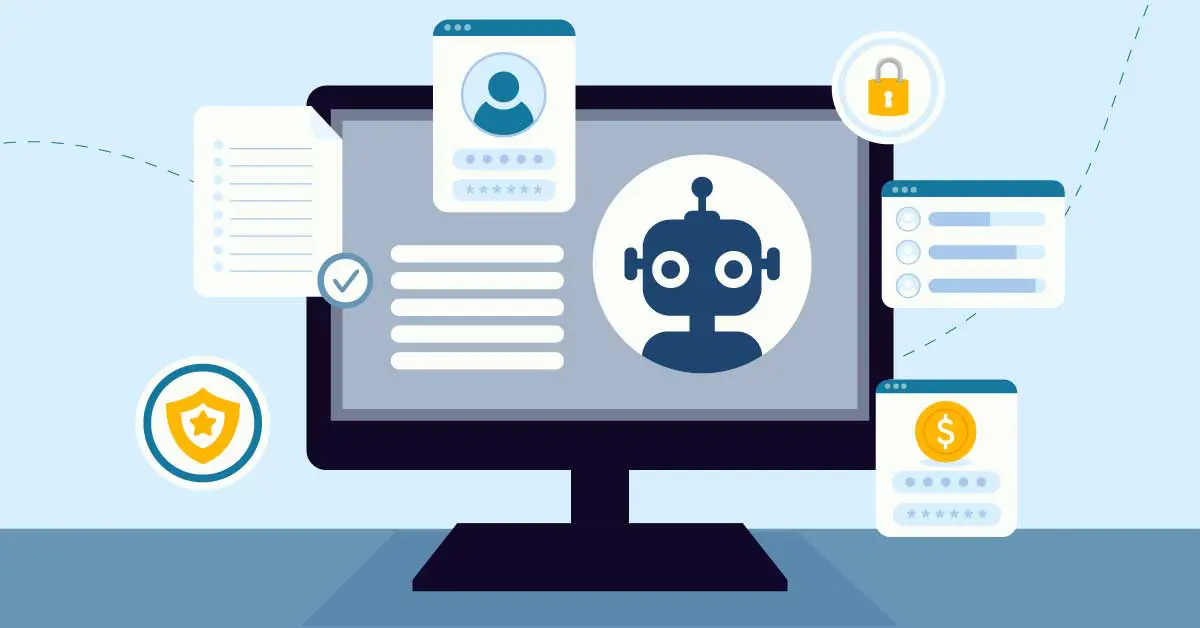
In the fast-paced world of modern business, being competitive means adopting cutting-edge technology. One such innovation that people have been raving about is ChatGPT and other chatbots. This advanced AI model offers various applications that can transform your business.
Here are the seven uses of ChatGPT for business, from generating executive summaries for your business plan to explaining complex concepts. Get ready to unlock the full potential of AI and take your business to new heights.
1. Generating Summaries
ChatGPT can assist you in generating textual summaries, including writing a report based on meeting notes, summarizing an article, or creating business plan executive summaries.
However, the result might be limited because some words require more “tokens,” and some use less. That is why you must split up your input into sections to make a full summary. In addition, ChatGPT can produce more advanced responses depending on user prompts or inputs.
2. Creating Outlines
ChatGPT can create an outline based on the topic you provide. This feature can help focus on ideas and increase the efficiency of report drafting. While some outlines may be overly broad for your particular needs, they offer an easy starting point.

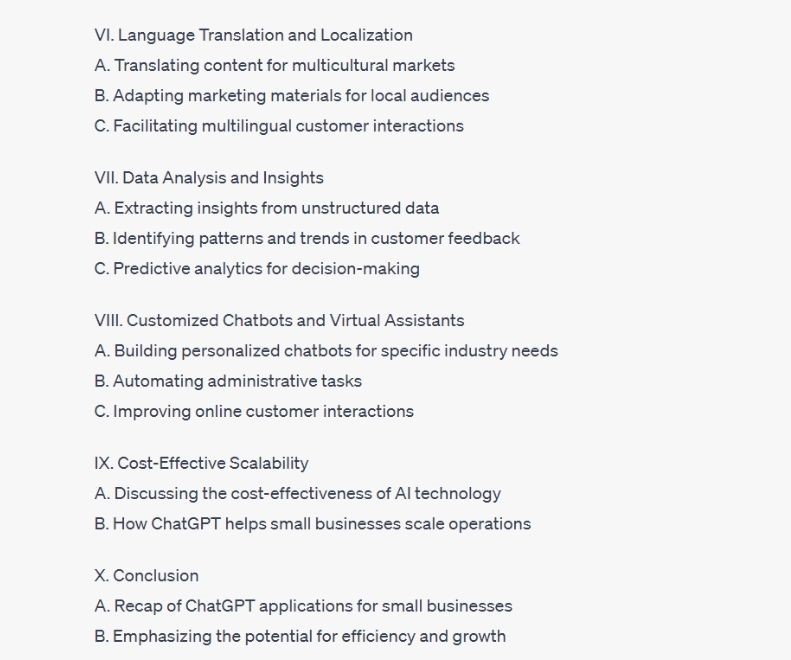
3. Brainstorming
Whether you want to formulate a new marketing strategy, think of ideas for social media posts, or come up with SEO-friendly titles, ChatGPT can help. ChatGPT can be a tool to aid your brainstorming and offer a good starting point. However, critical thinking, evaluation, and refinement are crucial steps to ensure the ideas generated are practical and suitable for your specific needs.
Here’s how you can use ChatGPT for business, specifically for brainstorming:
- Define your objective. Start by clearly defining the problem or topic you want to brainstorm about. What is the specific goal you want to achieve through brainstorming? Having a well-defined objective will help you focus the brainstorming session.
- Ask open-ended questions. Pose open-ended questions or prompts related to your topic. These questions should encourage creativity and exploration. For instance, if you’re brainstorming marketing ideas, you might ask, “What are unique and innovative ways to promote our product?”
- Provide context and constraints. Share relevant background information, context, and any restrictions or limitations that should be considered during brainstorming.
- Generate a list of ideas. Feel free to ask for multiple concepts and variations. You can ask follow-up questions or request further details about any intriguing suggestions.
- Evaluate and refine. After generating a list of ideas, evaluate and refine them. Take note of the feasibility, cost, and potential impact of each idea. You can also use ChatGPT to discuss the pros and cons of different ideas.
- Repeat the process. You can refine your questions, provide more context, and ask for more specific ideas based on the initial responses.
- Collaborate and share. You can involve others in the brainstorming process by sharing the ideas and solutions generated with them. Collaborative brainstorming sessions can lead to even more innovative results.
- Document and organize. You can use a document, spreadsheet, or a dedicated brainstorming tool to organize and categorize the ideas for future reference.
- Implement and test. Once you’ve selected the most promising ideas, implement them. Try to gather feedback on the solutions to determine their effectiveness.
4. Generating SEO-friendly Keywords
ChatGPT can be useful for generating SEO-friendly topics by providing insights, content ideas, and keyword suggestions. This AI tool has vast amounts of training data, giving insight into what words can work for any subject. Additionally, ChatGPT can help you generate a list of relevant keywords related to your niche or industry. Check out the following example.
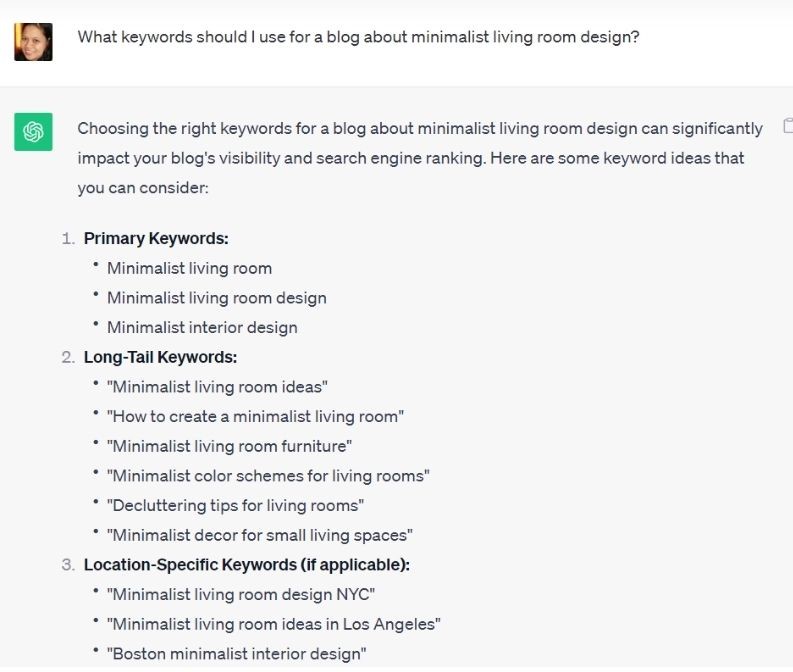

Still, it is best to conduct keyword research using tools like Ahrefs, SEMrush or Google Keyword Planner. Such tools help determine the search volume and competition for these keywords. Your choice of keywords should align with your blog’s content and target audience. Likewise, keeping your content high-quality and valuable to your readers is best, as this is essential for SEO success.
5. Generating Customer Service Emails
ChatGPT can also help you communicate with your customers more efficiently. For example, it can produce automated messages that notify your customers about known system downtime, upcoming business closures, or modified holiday hours. ChatGPT can also create sales emails that notify customers about discounts or other promotions.
6. Explaining Difficult Topics
One area where ChatGPT excels is its explanatory power. Since the tool has ingested vast amounts of data, it can answer almost any question to some extent, with the exception of current events. Remember that ChatGPT’s data only covers 2021 onwards. Some of its responses about relatively new topics may need to be corrected. It can generate favorable results if you consider it an automated encyclopedia that explains issues at various levels.
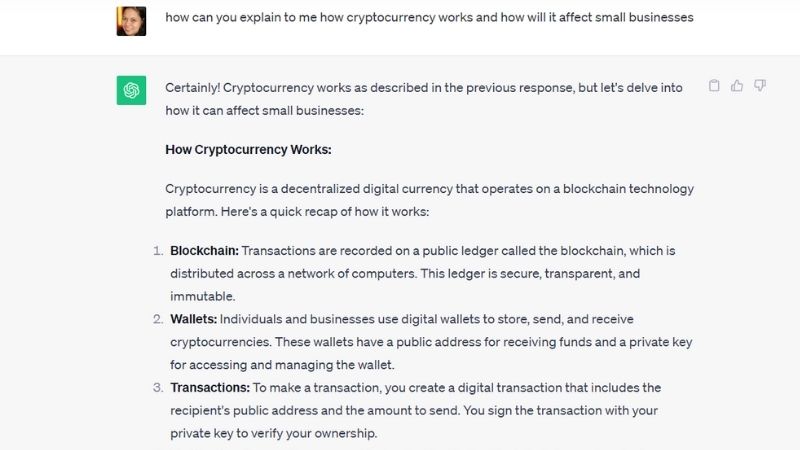
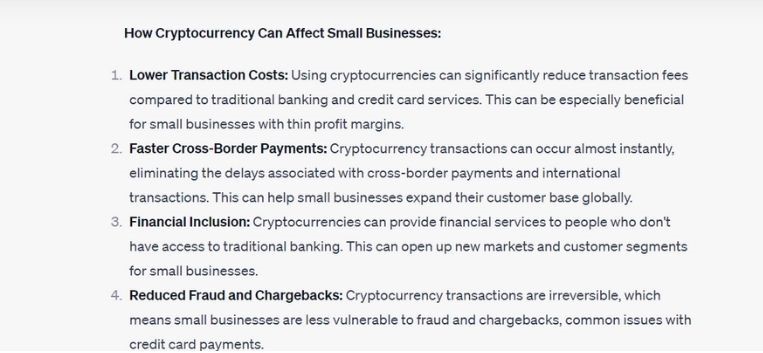
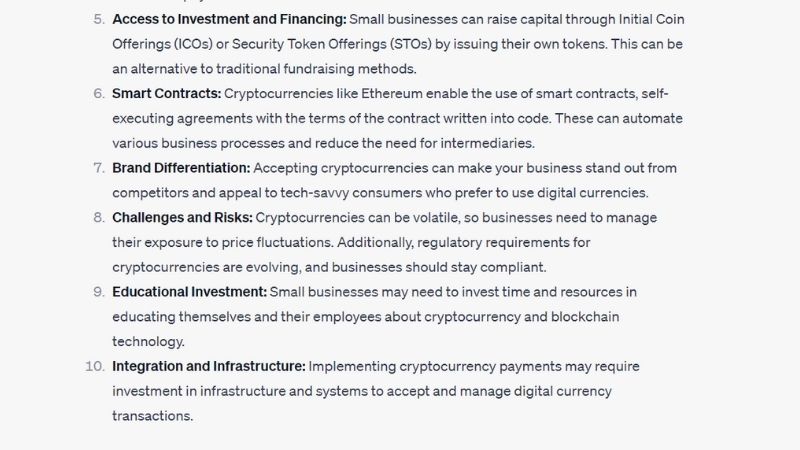
7. Creating Responsive Chatbots
ChatGPT can help create responsive chatbots by assisting in various ways throughout development. ChatGPT’s API is an excellent consideration for small businesses looking to integrate intelligent chatbots into their websites. There is no lack of chatbots currently available for companies to use.
However, ChatGPT-powered chatbots benefit from using the most cutting-edge AI tools. This technology means ChatGPT can generate responses rather than stock ones that best match a customer’s inquiries.
Conclusion
Almost everyone knows about ChatGPT and other AI tools nowadays. Chatbots have emerged as versatile tools with a wide range of applications in the business world. These seven uses of ChatGPT for businesses offer new avenues for efficiency and growth. Their ability to automate tasks, enhance customer interactions, and streamline operations make them valuable assets for modern enterprises.
About the author

Rowena Zaballa
With a background as a former government employee specializing in urban planning, Rowena transitioned into the world of blogging and SEO content writing. As a passionate storyteller, she uses her expertise to craft engaging and informative content for various audiences.













